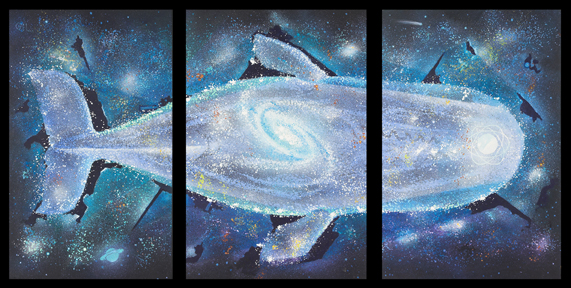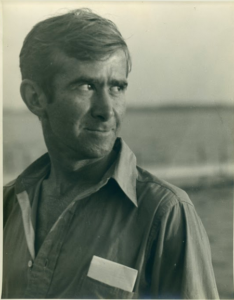
Gilbert Brown Wilson (1907-1991) was a prolific painter and writer who lived in Indiana, New York and Kentucky. Despite a critical splash in the 1930s, he sacrificed financial security for artistic freedom.
A native of Terre Haute, Indiana, Wilson studied at the Chicago Art Institute in 1928 and within a decade found himself at the center of controversy when his “social realist” murals at Woodrow Wilson Junior High School in Terre Haute faced destruction at the hands of local conservatives. Only support from local teachers and students—and a well-timed editorial from the New Republic—saved the work. The New Republic predicted that, “Gilbert Wilson will be proudly claimed in the future, not only by Terre Haute, but by Indiana and the United States.”
Now seems to be that future.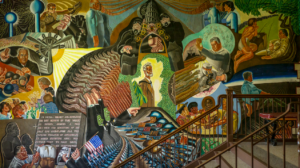 To quote Edward Spann, from his unpublished biography of Wilson: “Although Wilson worked like a demon for years on his art, he never achieved the success he dreamed of. He wrote in his journal of his worry that he had not achieved anything that would allow him to say ‘have done this & it will survive.’”
To quote Edward Spann, from his unpublished biography of Wilson: “Although Wilson worked like a demon for years on his art, he never achieved the success he dreamed of. He wrote in his journal of his worry that he had not achieved anything that would allow him to say ‘have done this & it will survive.’”
Wilson later confided in a friend: “I have painted 12 public murals, my name is in Who’s Who in American Art, my work is mentioned in four art books, yet I am down right ashamed of never having earned enough to pay an income tax at age 47.”
Gilbert Brown Wilson sits at a curious nexus of cultural forces, notably the influence of Diego Rivera-style WPA murals, his status as an openly gay outsider artist in the 1930s and his apprenticeship Rockwell Kent, the famed muralist and book illustrator. In his autobiography, Kent acknowledged the friction between the men, but praised Wilson’s talent. Kent called Wilson “far too an important an artist in his own right to be—as he, I’m sure would heartily agree—of much help to me.”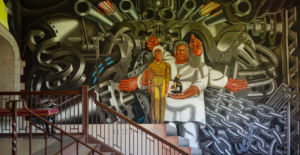
The artist toiled all his life on the edge of fame and produced gigantic murals at Indiana State University and Antioch College that courted both controversy and celebration. Film director John Huston declared Wilson “a brilliant artist and one of America’s foremost painters.” In 1937, Scribner’s Magazine called him “one of the most potent mural painters in America.”
The magazine wrote that Wilson’s “paintings reveal a tremendous force, an enormous breadth of scope. They have the insistent power, sometimes harsh and raucous in expression, that compels attention and understanding. They look backward at the past, portray the chaos of the present, and hail the visions of the future.”
He was also prolific writer who corresponded with figures such as Diego Rivera, Eleanor Roosevelt, Theodore Dreiser, Sherwood Anderson and Pearl S. Buck (who sponsored an exhibition of his work New York)—to name only a few. Yet, Wilson died penniless in obscurity.
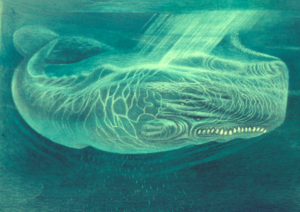 But, over the last decade, his stature as an artist has grown. In his hometown of Terre Haute, Indiana, his murals in Woodrow Wilson Middle School were instrumental in saving the building and getting it landmark status. All of Wilson’s diaries, stories and papers—2.5 million unpublished words—were archived at the Vigo County Library. The majority of his paintings found a home at the Swope Art Museum. Moreover, the respected historian and academic Edward K. Spann was working on the first biography of Wilson. Spann’s previous book Ideals and Politics: New York Intellectuals and American Liberalism was nominated for the Pulitzer Prize—so expectations were high.
But, over the last decade, his stature as an artist has grown. In his hometown of Terre Haute, Indiana, his murals in Woodrow Wilson Middle School were instrumental in saving the building and getting it landmark status. All of Wilson’s diaries, stories and papers—2.5 million unpublished words—were archived at the Vigo County Library. The majority of his paintings found a home at the Swope Art Museum. Moreover, the respected historian and academic Edward K. Spann was working on the first biography of Wilson. Spann’s previous book Ideals and Politics: New York Intellectuals and American Liberalism was nominated for the Pulitzer Prize—so expectations were high.
In the first line of his book, Spann writes: “Gilbert Wilson was a genius of great creative ambition who…never achieved celebrity status.”
But then Spann died, without his biography being published. Even in death, Wilson couldn’t catch a break.
Hat & Beard Press and project curator Robert K. Elder are hoping to change that. An illustrated edition of Moby-Dick has been published and showcases never-before-published artwork, notes and meditations on the novel—drawing from unprecedented access to Wilson’s estate. This book also provides a platform for the international art community to reassess and rediscover this remarkable man and his work.
Moby-Dick: Illustrated by Gilbert Wilson can be ordered on the
Hat & Beard Press website, here.
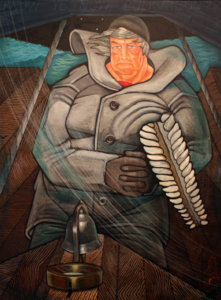
Moby-Dick images courtesy of the Swope Art Museum. Mural images courtesy of Sasha K.
